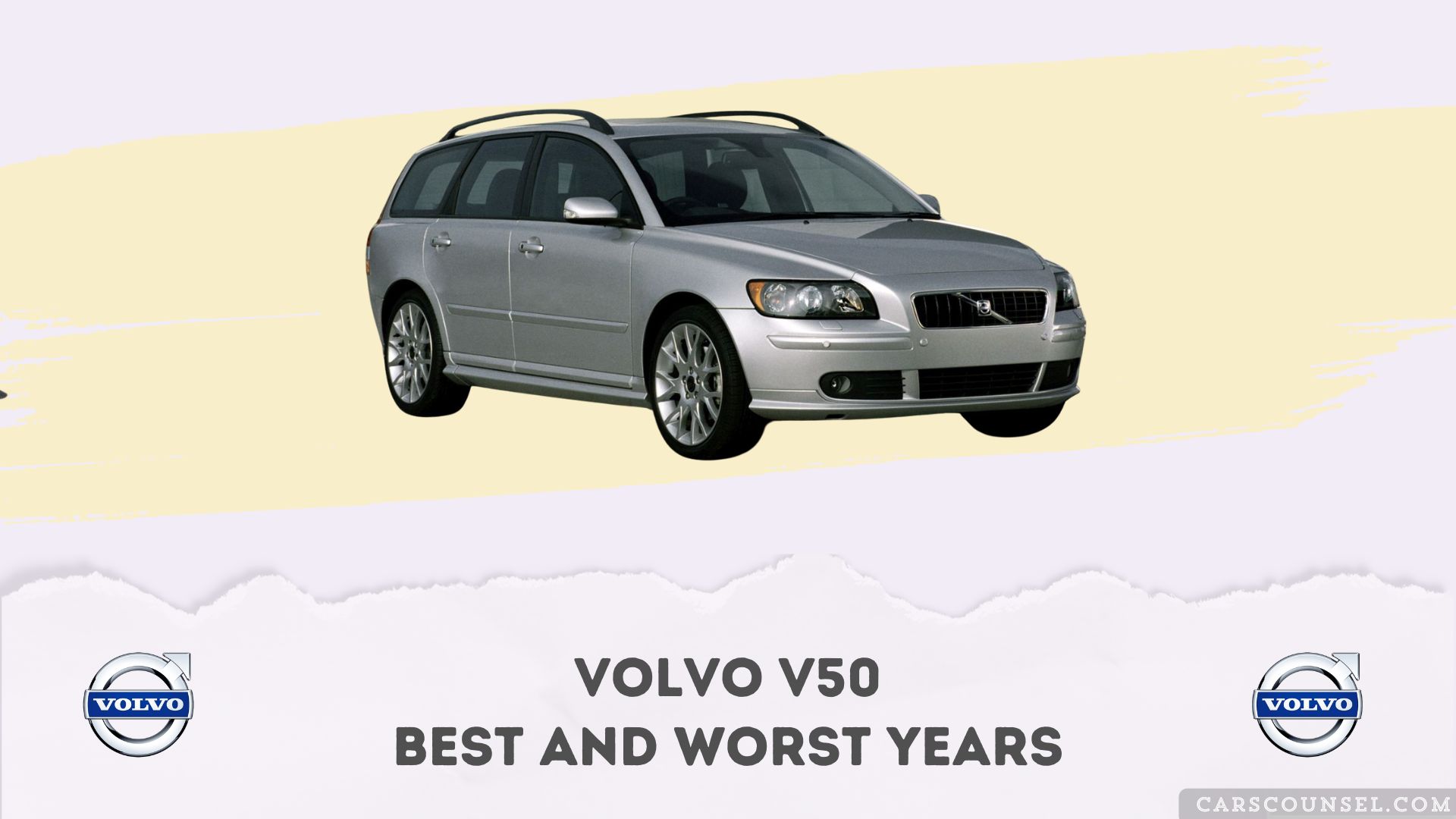When considering a pre-owned Volvo V50, it’s essential to “separate the wheat from the chaff.” You’ll want to know which model years to pursue and which to avoid. The truth is, not all V50s are created equal, and some years are plagued by costly issues.
By understanding the best and worst years, you’ll be better equipped to make an informed purchase decision. So, what are the standout years, and which ones should you approach with caution? Let’s take a closer look.

Quick Navigation
Key Takeaways
- 2004-2007 models are considered the worst due to timing belt issues and costly repairs.
- 2008-2010 models saw significant improvements, including a redesigned rear seat, making them a better choice.
- 2011-2012 models have fewer reported issues, making them a good option for buyers.
- 2013 models have a passenger side airbag recall, which should be considered before purchase.
- Researching the model year is essential to make an informed purchase and avoid costly repairs.
Common Issues to Watch Out For
When buying a used Volvo V50, it’s essential to be aware of the common issues that can arise.
You’ll want to check the timing belt, as it may need replacement. Turbocharger problems, like white smoke from the exhaust or oil leaks, are also common.
In fact, oil leaks are a recurring issue, so inspect the valve cover gaskets, oil pan gaskets, and seals. Additionally, transmission problems, such as rough shifting or delayed engagement, can occur in both automatic and manual transmissions.
Be cautious of these potential issues to avoid costly repairs down the road.
Reliability and Maintenance Concerns
As you plunge deeper into the world of used Volvo V50 ownership, you’ll want to ponder the reliability and maintenance concerns that come with this model.
One major concern is the timing belt and tensioners, which can be prone to failure if not replaced regularly.
You’ll also want to keep an eye on the interior space, guaranteeing it remains clean and free of clutter to prevent wear and tear.
Additionally, the air conditioning and power steering systems require regular checks to prevent issues.
Model Year Comparison: Best and Worst
You’ve narrowed down your search to a used Volvo V50, but now it’s time to drill down to the specific model year that suits your needs.
With various model years to choose from, it’s essential to know the best and worst ones.
- 2004-2007: These models have timing belt issues, which can be costly to repair. Avoid them if you can.
- 2008-2010: These years saw significant improvements, including a redesigned rear seat with more legroom.
- 2011-2012: These models have fewer reported issues, making them a good choice.
- 2013: The passenger side airbag recall is a concern in this model year, so be cautious.
Engine and Transmission Problems
Beyond the model year considerations, it’s just as vital to be aware of the engine and transmission problems that can plague the Volvo V50. If you’re not proactive, you might face issues like timing belt failures, turbocharger problems, oil leaks, and transmission troubles. These can lead to costly repairs, decreased engine performance, and even catastrophic engine damage.
| Problem | Symptoms | Consequences |
|---|---|---|
| Timing belt failure | Engine stalling, loss of power | Catastrophic engine damage |
| Turbocharger issues | White smoke, reduced power, noises | Decreased engine performance, costly repairs |
| Oil leaks | Oil puddles, decreased oil levels | Internal engine wear, engine damage |
| Transmission problems | Rough shifting, delayed engagement | Transmission fluid leaks, grinding sounds |
| Manual transmission issues | Clutch wear, grinding sounds | Difficulty shifting, transmission failure |
Electrical and Suspension Faults
What’s lurking beneath the surface of your Volvo V50’s electrical and suspension systems?
You might be surprised to find issues that can affect your driving experience.
Here are some common problems to watch out for:
- Suspension issues: Worn-out lower control arms and drop links can cause knocking noises, rattling, or clunking sounds, and affect vehicle handling and steering.
- Steering problems: High-pitched sounds or stiffness when turning the steering wheel can indicate issues with the power steering pump, steering rack, or steering column.
- Electrical faults: Unusual sounds when applying the brakes, spongy brake pedal, or low brake pedal, and vibrations when braking can be signs of electrical issues.
- Ride comfort: The suspension design can lead to a bumpy ride, especially in the front suspension, which can be uncomfortable for passengers.
When looking at performance cars, make sure to check out our guides on models like the Volvo V60,Volvo S80, Volvo S90 and Volvo V40. Knowing which model years to target and which to avoid is crucial. Our expert reviews break down these models, providing insights into the years that are celebrated for their engineering excellence and driving satisfaction, as well as those that are best to avoid due to potential issues.

